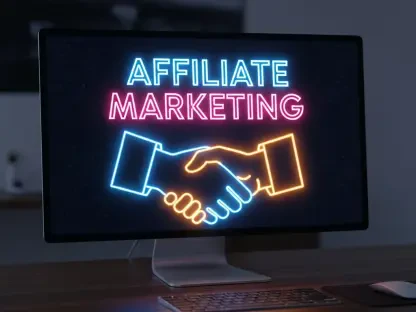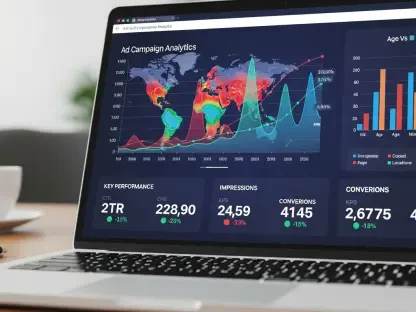Listen to the Article
Businesses are seeking easier and faster ways to improve dynamic content efforts in their marketing. Simple personalization is not enough anymore; now, marketers are investing in hyper-personalization with the help of artificial intelligence.
Gone are the days when customers could be easily impressed by simply including their first names in emails and SMSs. Customers don’t just want personalization through small gestures anymore; they want to interact with brands that ‘know’ them. This demand results in a gravitation towards personalized, one-on-one marketing experiences.
This shift in interest has empowered brands to find modern marketing solutions to strengthen customer relationships. AI-powered hyper-personalization brings a new tailoring tactic that marketers can leverage to bridge the gap between themselves and their buyers.
This article explores the growing use of AI-driven personalization, its benefits for organizations, and its lasting influence on consumer behavior.
Personalization Beyond Name Tags
Before AI usage in marketing, marketers used segmentation in their email strategies. This meant dividing their audience based on several factors, including:
Demographic information like age, social class, or gender.
Historical behavioral data, such as previous purchases and favorite items.
In-depth analysis that examines customer lifestyle and frequently engaged content.
This data powered the curation of relevant content that specifically matched customer groups and delivered marketing through emails, push notifications, and text messages.
Active communication is one of the important factors that keep customers interested and engaged with brands. However, when a brand has customers from different locations, backgrounds, and cultures, it becomes increasingly difficult for organizations to reach all buyers on a broad scale.
Standard personalization then arrived, encouraging marketers to add first or last names in emails when interacting with buyers. Only recently has segmentation been replaced with personalization, and now, hyper-personalization—the next modern step in brand-buyer interactions.
This leverages AI, IoT devices, machine learning, and a mix of gathered customer data, such as:
Behavioral: Tracks customer interaction on company websites and apps.
Transactional: Includes item searches, purchase history, payment preferences, reviews, and returns.
Social media: Collects data on customer interaction with topics across social platforms, including their likes, shares, and left comments.
The information enables the creation of highly tailored and relevant content, experiences, and offers for customers, allowing brands to connect with buyers who previously didn’t engage with mass marketing. This fosters engagement through customized language that speaks directly to them, efficiently converting them into loyal customers.
Businesses that listen to their buyers and show efforts to personalize their targeted media get rewarded with increased engagement and sales. An estimated 86% of companies have reported a boost in results, and 80% of customers demonstrated a preference for hyper-targeted experiences. These results are enough to encourage companies to continue adapting to a more tailored approach.
Hyper-personalization benefits both marketers and buyers. Sellers get engagement, conversions, increased ROI, and additional data that will assist in future marketing, while consumers feel closer to brands that take initiative and care enough to market their products and services specifically to them. It demonstrates a commitment to understanding and valuing each buyer.
Benefits of Hyper-Targeted Marketing
Traditionally, marketers would create manual, tactical solutions to this, but the interactions would be for stand-alone purposes and not a long-term answer to consumers’ pleas. With the introduction of AI-powered promotions and generative AI, personalized marketing efforts become more efficient, accurate, and relatable, increasing overall buyer interaction.
Hyper-personalization offers these benefits in marketing:
Accurate customer data and insights
It allows marketers to properly understand the needs and interests of customers by leveraging collected data, including browsing history, location, social media activity, and purchases. The data also provides valuable insights into customer behavior, preferences, and favorable trends.
Tailored customer experience
Modern technology provides marketers the opportunity to move from group customers to one-on-one marketing efforts that better suit individual customers. By understanding and anticipating individual buyers’ needs, AI-powered personalization creates an intuitive customer journey that leaves the customer feeling heard and valued.
Adaptation
Every interaction can be updated through data. The data collected is not just to build a profile but to create dynamic interactions.
Increased engagement
When marketers consistently bring customers highly relevant content that they enjoy, they are more likely to interact with the brand. This leads to higher open rates, click-throughs, and engagement with campaigns and main sites.
Optimized marketing spending and ROI
By providing the right buyers with highly relevant messages, businesses can reduce marketing efforts that don’t align with their customers and allocate resources more efficiently. This leads to higher conversion rates and better sales, two factors that influence increased marketing ROI by 10 to 30%.
Improving operations to include hyper-personalization may seem tedious, especially when regular personalization efforts have worked for a prolonged period, but it has been shown that integrating AI is worth the effort.
Real-World Hyper-Personalization Efforts
Here are examples of three popular brands implementing hyper-marketing to improve customer experience:
Starbucks uses user purchasing history, location, and mobile app activity to list customized order recommendations, suggest items that customers may enjoy based on previous purchases, and inform users of nearby stores for in-person purchases. They additionally provide personalized offers and incentivize customers with free treats for the price of engagement.
Netflix uses a recommendation engine that analyzes all its users’ viewing history, searches, show ratings, and additional behavioral data to personalize each user’s homepage with lists of suggested content predicted to be favored.
Spotify uses hyper-personalization to provide its users with weekly curated playlists and lists of recommended albums and new songs to listen to. Their algorithm analyzes users’ most listened-to genres, artists, and songs to highlight similar-sounding music every time users interact with the platform. Spotify now features an event category that recommends concerts and festivals based on artists users frequently listen to or follow.
These small additions improve customer experience and create loyal, long-lasting buyers who are more likely to promote the brand to others.
Conclusion
Effective marketing now requires a personal touch to succeed. Customers no longer engage with generic marketing efforts that render them to segmented groups. They prefer and demand more personable marketing that touches on individual interests. Hyper-personalization is the solution to frequently faced challenges such as decreased customer interaction and stagnant sales. By leveraging datasets including user history, location, social media activity, and even purchase behaviors, companies can use insights to curate highly relevant content that resonates with individual customers. With this AI-powered marketing strategy, organizations can expertly utilize valuable customer behavior insights to stand out among competitors, increase sales, and foster long-lasting, loyal consumers.









